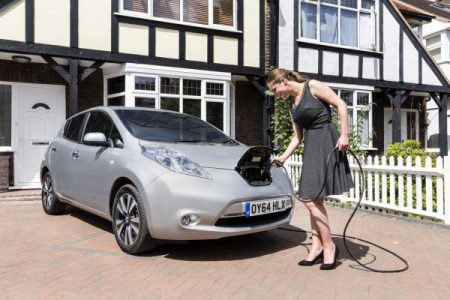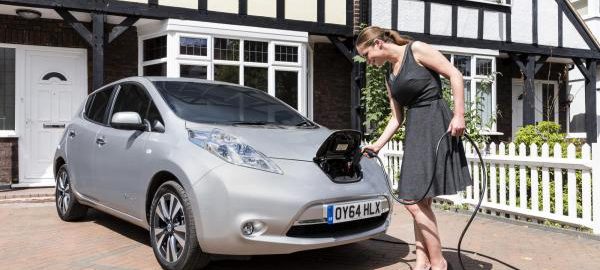There are already over 60,000 home charge points for electric cars in the UK, and new research finds these sockets will be one of the most desirable features of neighbourhoods in the future.

The study, conducted by electric car campaign Go Ultra Low, suggests technologies such as electric car charging points, ‘positivity’ lamp posts which beam colourful lighting during winter to combat SAD (seasonal affective disorder) and fingerprint-activated door locks could be some of the most sought-after features for house buyers in two decades’ time.
Electric charge points on homes aren’t just a trend for the future. Government statistics show there are already over 60,000 home chargers in the UK as motorists take advantage of a £500 government grant towards installing one. Data from charging providers shows that around 90% of electric car charging is done at home.
The survey shows the most desirable feature of future neighbourhoods is next generation smart lamp posts (chosen by 52% of respondents). However, a close second is having electric vehicle charge points on every house – chosen by 49% of people surveyed. These were followed by front door locks which can be opened using fingerprint technology (37%), communal rainwater recycling technology (37%) and Wi-Fi emitting trees (22%).
The results also show that most people think electric cars will become an essential part of housing developments across the country. Nearly three quarters (72%) said they expect electric vehicles to be the most common type of vehicle on residents’ driveways. According to just over a quarter (26%) of people, hydrogen cars will also be a more familiar fixture in the future.
Those surveyed predict that technology will make them more willing to share a car with their neighbours over the next 20 years. Almost half (48%) of people expect to be sharing electric cars with other people who live on their streets, with over a tenth of people agreeing that this could lead to stronger relationships between neighbours.
The 10 most desired features for future neighbourhoods from the research are as follows:
- ‘Positivity’ smart lamp posts using colourful hues to combat Seasonal Affective Disorder (52%)
- Electric car charge points on every house (49%)
- Locks on front doors which can be opened by fingerprint (37%)
- Water recycling capabilities (37%)
- Rainwater harvesting technology (34%)
- Outdoor solar powered charging stations (28%)
- Electric car sharing schemes (24%)
- Trees emitting Wi-Fi (22%)
- Fox proof bins (20%)
- Robotic gardeners (11%)
Maxwell Hutchison, architect and former president of the Royal Institute of British Architects, said:
“Green technology that enhances our lives will fuel neighbourhoods of the future. Whilst ‘positivity’ lamp posts and robotic gardeners may be a way off, developments such as electric car charge points, electric car schemes and rainwater harvesting technology are starting to be implemented by new cutting-edge housing developments.
“The UK already has its first eco town being developed in Oxfordshire, and there are others on the horizon, with features that include shared electric car sharing schemes and electric car charge points for every house.”
Poppy Welch, Head of the Go Ultra Low campaign, said:
“Electric cars are on track to become an essential part of everyday life, and our research backs this up with strong demand for charge points and EV sharing schemes.
“Electric cars are high performing, fun, exciting and financially compelling. There are currently over 75,000 on UK roads, a growth of 37% in a year, based on sales from January to September. Their role both now and in the future is unquestionable, as indicated by the £80m invested by government in further improving the nation’s electric vehicle infrastructure.”
Source: Go Ultra Low
